How to easily know if your roof sustained hail damage!
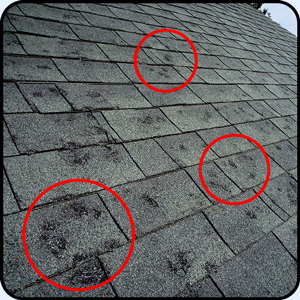
Signs of Roof Hail Damage
Hailstorms can wreak havoc on roofs, causing significant damage that may not always be immediately apparent.
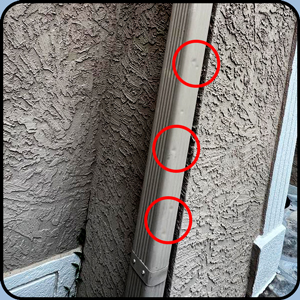
Hail Ground Damage
While it is always recommended to have a professional inspection done, there are some signs of hail damage that you can look for from the ground.
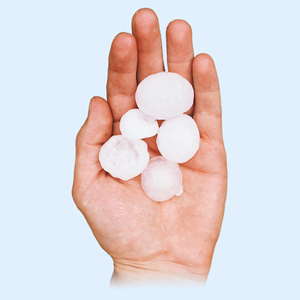
Hail Size vs. Damage
When it comes to hail, the size of the hailstone is a crucial factor. The larger the hailstone, the higher
the potential for damage.

Hail damage signs to look for on a roof
When it comes to protecting your home, one area that is particularly vulnerable to damage is the roof. Hailstorms can wreak havoc on roofs, causing significant damage that may not always be immediately apparent. In this section, we will discuss the signs to look for when examining your roof for hail damage.
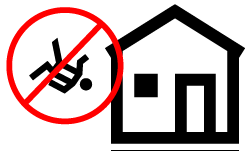
We
strongly advise against homeowners climbing onto their roofs due to the
high risk of severe bodily harm or even death. It is a dangerous
activity that should be left to professionals.
The first thing you should do after a hailstorm is visually inspect your roof for any obvious signs of damage. Look for dings or cracks in roofing materials, such as shingles or tiles. These can indicate that the impact of hailstones has caused structural damage.
Next, check the shingles themselves for signs of hail impact. Look for areas where the granules have been knocked off with visible indents or punctures. These are clear indicators that your roof has suffered from hail damage.
Examining any metal components on your roof, such as flashing, metal air vents, boots, or gutters, is also important. Hailstones will dent or ding these materials, compromising their effectiveness and potentially leading to leaks.
Sometimes, it may be necessary to climb onto your roof to get a closer look at potential damage. However, we strongly advise against doing this if you are not experienced with rooftop safety procedures. It's best to hire a professional roofing contractor, like Edge Roofing, who can safely assess any repairs or full replacement of any hail-damaged roof.

Fill out the form below for a FREE roof inspection from Edge Roofing!
Required Fields *
Thank you for getting in touch!
One of our colleagues will get back to you shortly.
Have a great day!


Hail damage signs to look for from the Ground
When a hailstorm hits, it can cause significant damage to various parts of your property. While it is always recommended to have a professional inspection done, there are some signs of hail damage you can look for from the ground.
One common area where hail damage occurs is on siding. Look for dents, cracks, or chipped paint on the siding of your home. Hailstones can also cause damage to windows, so check for any cracks or shattered glass. Check all window screens for any impacts, holes, or tears.
Gutters and spouts are also susceptible to hail damage. Inspect them for dings or dented sections that may have been caused by the impact of hailstones. Similarly, doors and garage doors may show signs of dents or dings from the storm.
Another area to pay attention to is the landscaping close to your house. Hailstones can cause damage to plants and vegetation. Look for broken branches, flattened flowers or leaves, or any other visible signs of impact.
Lastly, it's important not to forget about your roof. While spotting hail damage on a roof from the ground can be challenging, there are some visible signs you can look out for such as missing shingles or granule loss on asphalt shingles.
Keep in mind that these visible signs may not always indicate the extent of the damage. It is advisable to consult with a professional roofing contractor who can provide a thorough assessment and recommend a necessary replacement if needed.

At what size does hail cause damage?
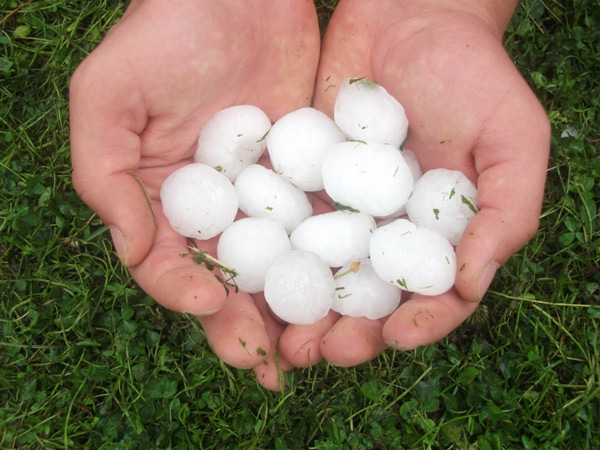
Determining the size of hail that can cause damage to roofs is an important consideration for homeowners and insurance companies alike. The impact of various sizes of hailstones on roofs can vary significantly, and understanding this relationship is crucial in assessing potential roof damage.
When it comes to hail, the size of the hailstone is a crucial factor. The larger the hailstone, the higher the potential for damage. Typically, hailstones with a diameter of 1 inch or larger are considered capable of causing damage to roofs. However, it's important to keep in mind that other factors like wind speed and angle of impact can also impact the extent of damage.
Roofing materials also play a role in determining susceptibility to hail damage. While some materials like metal or asphalt shingles may be more resilient against smaller-sized hailstones, they can still be vulnerable to larger ones. On the other hand, more fragile materials like clay tiles or wood shingles may sustain damage even from smaller-sized hailstones.
To accurately assess potential roof damage caused by hail, it is recommended to consult with a roofing professional who has expertise in evaluating such situations. At Edge Roofing, we can inspect your roof for signs of impact, and guide necessary repairs. Additionally, we can assist you in providing an Xactimate Estimate (the industry standard) and if needed, collecting hail damage reports of your location to ensure coverage for the cost of replacing your roof.
In conclusion, determining the size of hail that can cause roof damage is essential in understanding its potential impact on roofing materials. Consulting with experts and being proactive in addressing any concerns after a severe weather event involving hail can help ensure the long-term integrity of your roof.
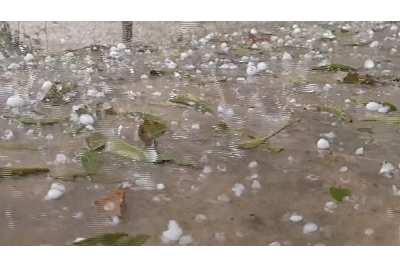
Determining the size of hail that can cause damage to roofs is an important consideration for homeowners and insurance companies alike. The impact of various sizes of hailstones on roofs can vary significantly, and understanding this relationship is crucial in assessing potential roof damage.

Do you see signs of hail damage on your roof?

Do you need to fix a roof damaged by hail?

With most insurance companies, you have one year from the storm day to file a claim and an additional year from the assessment date to get the repairs completed. However, some companies only allow six months for this process. While it may seem like a long time, we all know how quickly time can fly. Therefore, it's important not to put off those instructions and repairs.
Having a roof that is damaged by hail can be a cause for concern. While it may be tempting to ignore the damage, it is important to understand the necessity of fixing a hail-damaged roof and the potential consequences of leaving it damaged.
Firstly, replacing a hail-damaged roof is essential for maintaining the structural integrity of your home. Hail can cause significant damage to shingles, resulting in leaks and further deterioration over time. Ignoring these issues can lead to water infiltration, which can damage your home's interior, including walls, ceilings, and even electrical systems.
Furthermore, leaving a hail-damaged roof unrepaired can also impact your home's energy efficiency. Damaged shingles may compromise the insulation properties of your roof, leading to increased energy consumption and higher utility bills.
Another important consideration is insurance coverage. Many insurance policies cover hail damage, but they often have time limitations for filing claims and completing a necessary replacement. Failing to address the damage promptly could result in denial of coverage or limited reimbursement.
Lastly, delays may also decrease the overall value of your property. Potential buyers are likely to be deterred by visible signs of roof damage caused by hail. A well-maintained or replaced roof adds curb appeal and reassurance to potential buyers.
In conclusion, it is crucial to address any hail damage on your roof promptly. Replacing a hail-damaged roof not only ensures the safety and integrity of your home but also helps maintain its value and prevent further costly issues down the line.
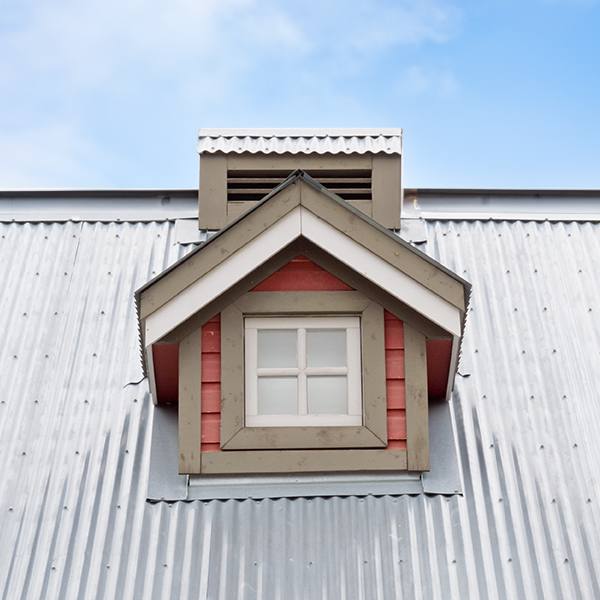
How to tell if Hail Damaged your Metal Roof
After a hailstorm, it is important to inspect your metal roof for any potential damage. Identifying hail damage promptly can help you address any issues before they worsen and potentially lead to leaks or further structural problems. Below are some key signs to determine if your metal roof has been damaged by hail. Again... We strongly advise against homeowners climbing onto their roofs due to the high risk of severe bodily harm or even death. Please get in touch with Edge Roofing to inspect your roof!
6 key signs of metal roof damage!
|
1. Visual Inspection: Start by visually examining the surface of your metal roof. Look for dents, dings, or dimples on the metal sheets caused by the impact of hailstones. These may appear as small indentations or areas where the surface is not smooth. |
|
2. Paint Condition: Check the condition of the paint on your metal roof. Hail can chip or peel off paint, leaving exposed areas vulnerable to rust and corrosion over time. Look for any signs of paint chipping or peeling off in the areas impacted by hail. |
|
3. Leaks and Water Damage: Inspect your attic or ceiling for any signs of leaks or water damage following a hailstorm. Look out for water stains, dampness, or mold growth which could indicate that there are cracks or punctures in the metal sheets allowing water to seep through. |
|
4. Punctures and Holes: Carefully examine each metal sheet for punctures or holes caused by large hailstones. These may appear as visible openings in the material and can compromise the integrity of your roof. |
|
5. Professional Inspection: If you are unsure about assessing hail damage on your own, it is recommended to seek assistance from a professional roofing contractor who specializes in storm damage assessments. They have expertise in identifying subtle signs of damage that may not be immediately apparent to the eye. |
What people are saying!
Google & Facebook Reviews.


About Us!
Edge Roofing, LLC was established in 2015 and has installed over 7 million square feet of residential and commercial roofing. We are based in North Georgia, with our office up in Dahlonega, GA. We are licensed and insured and we proudly wear the Owens Corning, Platinum Preferred Contractor badge. We are dedicated to serving our customers with integrity, transparency, superior knowledge, and skills.
We routinely provide on-going training and seminars to our staff to better serve our customers. Edge Roofing is not just in the roofing business, we are in the people business. We believe in taking care of folks above everything else. When it comes to your roof our experienced project managers and installers bring decades of roofing experience ensuring the best solution at the best price. From inspection and application to routine maintenance, we have a roofing solution for any shape or size.